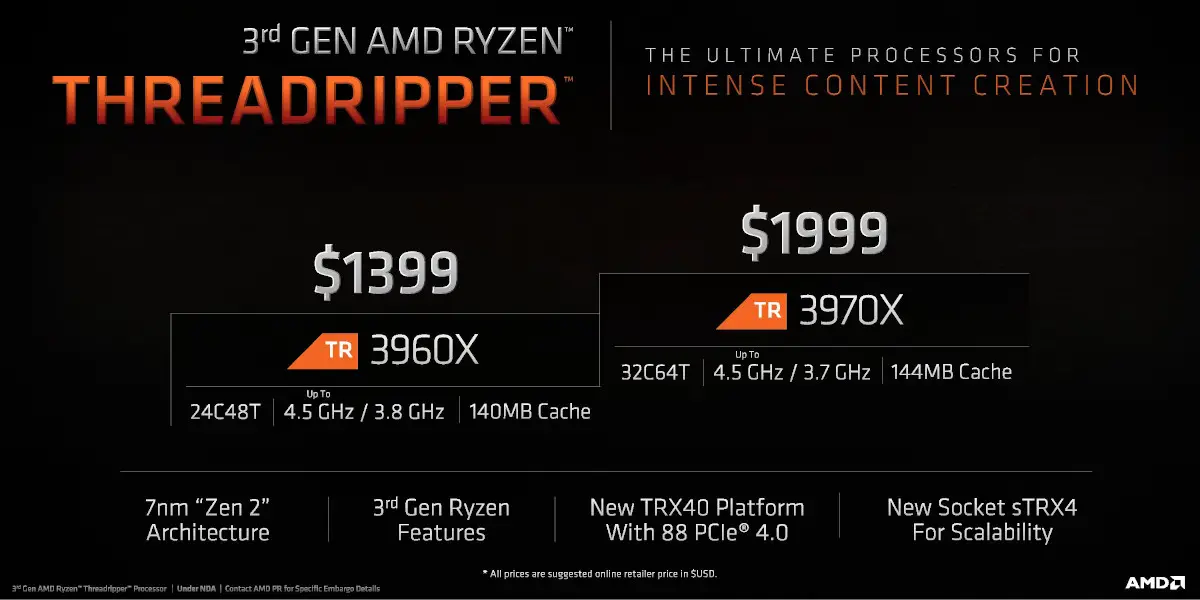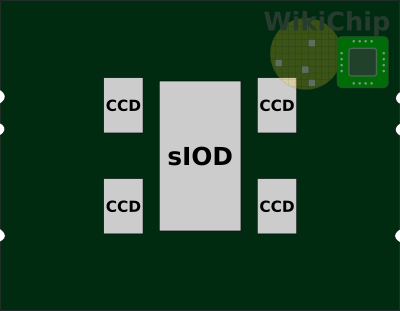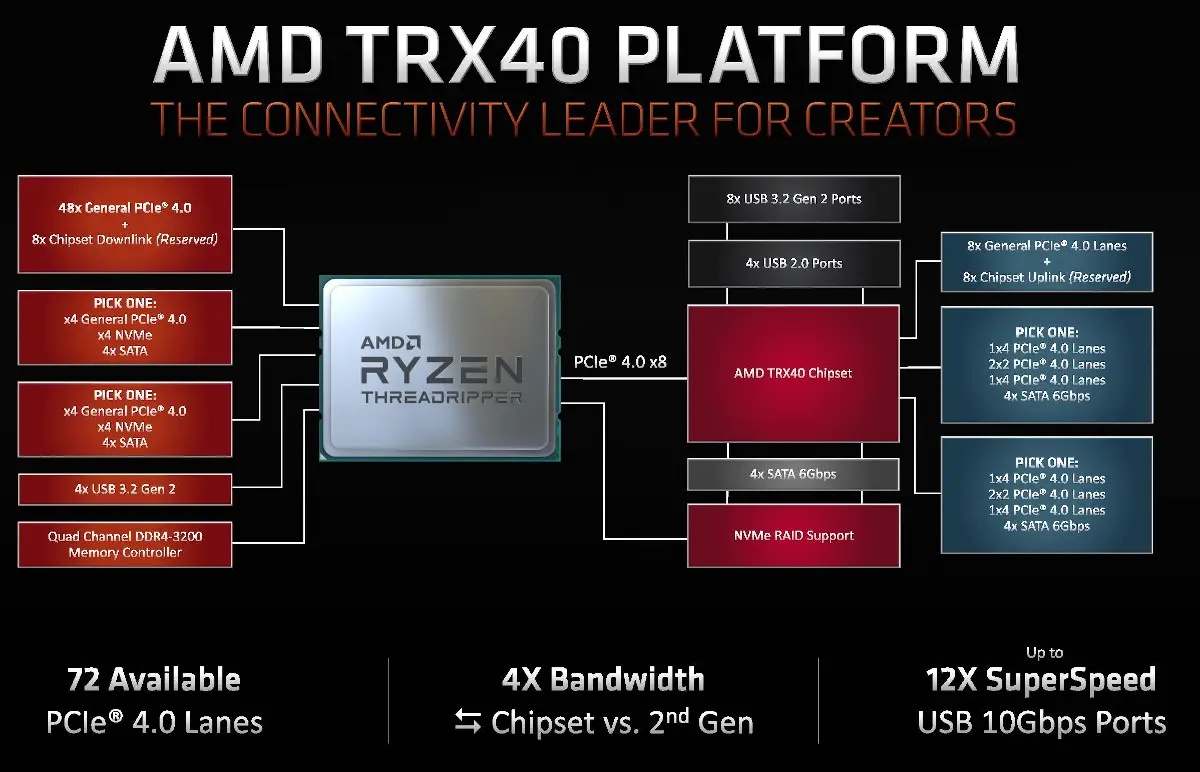AMD Announces 3rd Gen Ryzen Threadripper
This week, AMD is announcing the highly anticipated 3rd Generation Ryzen Threadripper family, codename Castle Peak.
3rd Generation Ryzen Threadripper
This is one of the most highly-anticipated products of the year. AMD is finally unveiling initial SKUs from the 3rd-generation Ryzen Threadripper family. Two processors are currently being launched – the TR 3960X and the TR 3970X. One is a 24-core while the other is a 32-core part. The full specs are shown below. Compared to the prior generation, the frequency uplift is quite substantial – around 700 MHz improvement to the base frequency and 300 MHz to the maximum single-core turbo frequency. Albeit, the higher frequency does come at a slightly higher TDP of 280 W.
| 2nd Vs. 3rd Gen Threadripper | ||||||
|---|---|---|---|---|---|---|
| Model | Cores | Frequency | TDP | L3 | Release Price | |
| Base | Turbo | |||||
| 3rd Gen TR | ||||||
| TR 3970X | 32 (64) | 3.7 GHz | 4.5 GHz | 280 W | 128 MiB | $1,999.00 |
| TR 3960X | 24 (48) | 3.8 GHz | 4.5 GHz | 280 W | 128 MiB | $1,399.00 |
| 2rd Gen TR | ||||||
| TR 2990WX | 32 (64) | 3.0 GHz | 4.2 GHz | 250 W | 64 MiB | $1,799.00 |
| TR 2970WX | 24 (48) | 3.0 GHz | 4.2 GHz | 250 W | 64 MiB | $1,299.00 |
| TR 2950X | 16 (32) | 3.5 GHz | 4.4 GHz | 180 W | 32 MiB | $899.00 |
| TR 2920X | 12 (24) | 3.5 GHz | 4.3 GHz | 180 W | 32 MiB | $649.00 |
There are a couple of big points to discuss here. The first is the core count. Compared to the prior generation, AMD dropped the 12 and 16 core SKUs. The reason is clear – those were moved down to the mainstream lineup, therefore, there is no need for them here. Additionally, although the current disclosure tops out at 32 cores, there is plenty of room for higher core count SKUs such as the hypothetical 3980X and 3990X. And then there is the power. The new chips have much higher frequency but it did result in a slight TDP hit.
Architecturally, the new processors are all based on the Zen 2 microarchitecture, organized as four CCDs and a single sIOd die per package. There are either six cores or eight cores enabled in each of the CCDs along with 32 MiB of cache for a total of 128 MiB of L3. Note that while the package itself is identical to the last generation, the socket has changed. The new processors require the use of a new socket sTRX4 (vs sTR4) that juggle around some of the pins.
There is also a small downside to the new chips – a pricing regression. Historically, new chips were around the same price or cheaper generation-over-generation (for similar specs such as core count and memory), making the performance improvements more or less “free” with each new generation. This was also true for the first two generations of Ryzen Threadripper. With the new SKUs, AMD has increased the price by $100 and $200, meaning you pay more for the higher performance. It’s possible the move took place due to the company’s confidence in its lineup. Intel’s recently-launched Core X lineup saw a 50% reduction in price and with the lineup capped at 18 cores, Intel has nothing to offer at the >$1000 price range. The same is true for the recently launched Xeon W-2200 lineup. In fact, the only way to get higher core count parts from Intel is from the enterprise workstation (Xeon W-3200 series) or a server market (Xeon Cascade Lake SP) and in both cases you’ll pay a premium.
At the platform level, the new processors will use the new TRX40 chipset. In total, the CPU exposes 72 PCIe Gen 4 lanes, 64 lanes for various peripherals with an additional x8 reserved for the chipset. With x8, you are looking at twice the number of lanes and since those lines can utilize PCIe Gen 4, you get twice the data rate for four times the peak bandwidth between the chipset and the CPU versus the last generation. As far as memory goes, there is no increase in channels. It’s still quad-channel DDR4 supporting data rates of up to 3200 MT/s.
The exact types of I/O and the number of lanes allocated are shown in the diagram below.
The Threadripper 3960X and 3970X will be available worldwide November 25, 2019.
Related Stories
–
Spotted an error? Help us fix it! Simply select the problematic text and press Ctrl+Enter to notify us.
–




